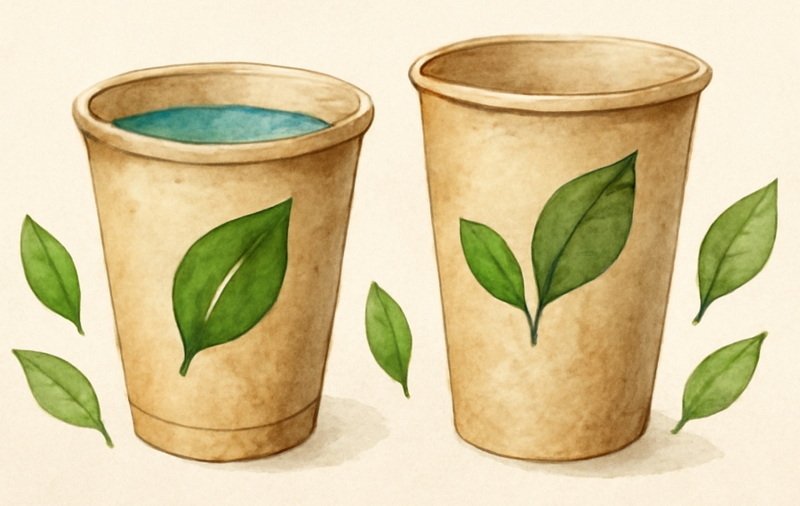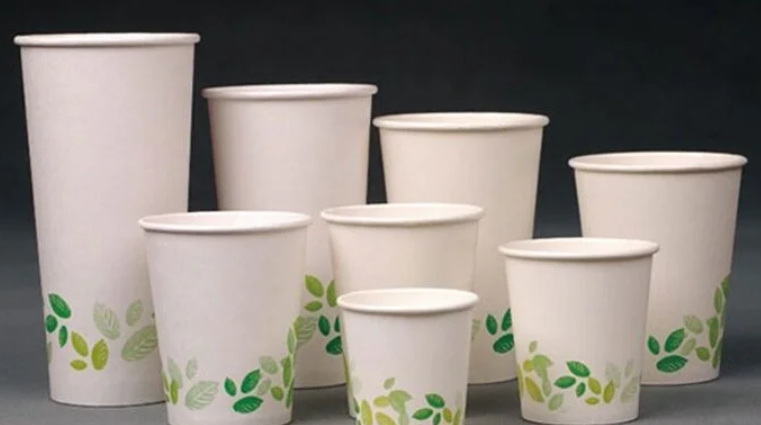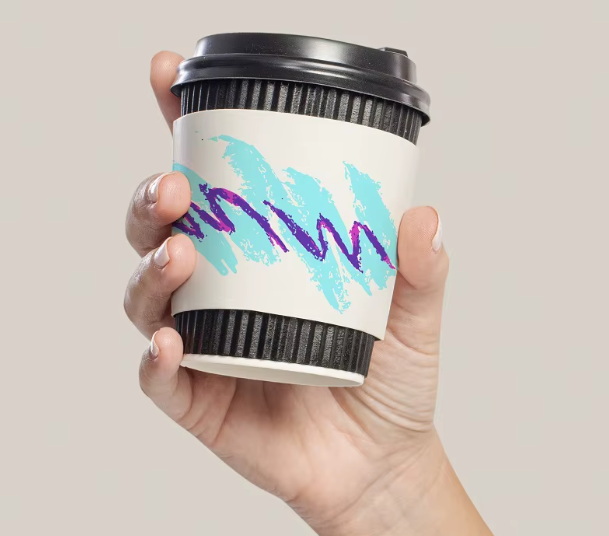
Content Menu
● What Is Disposable Cup Printing?
● Why Choose Custom Disposable Cup Printing?
● Types of Disposable Cups for Printing
● The Step-by-Step Process of Disposable Cup Printing
>> 1. Sourcing and Preparing Materials
>> 2. Designing the Artwork
>> 3. Selecting the Printing Method
>>> Offset Printing
>>> Flexographic Printing
>>> Digital Printing
>>> Screen Printing
>>> Pad Printing
>>> Heat Transfer Printing
>> 4. Preparing the Cup for Printing
>> 5. Printing the Design
>> 6. Forming and Finishing
>> 7. Quality Control
>> 8. Packaging and Delivery
● Factors Affecting Disposable Cup Printing
● Environmental Considerations in Disposable Cup Printing
● Customization Options in Disposable Cup Printing
● Applications of Custom Disposable Cup Printing
● Overcoming Challenges in Disposable Cup Printing
● Conclusion
● Frequently Asked Questions (FAQ)
>> 1. What is the minimum order quantity for custom disposable cup printing?
>> 2. Can I print full-color images on disposable cups?
>> 3. Are custom printed disposable cups safe for hot beverages?
>> 4. How long does the disposable cup printing process take?
>> 5. Can I use eco-friendly materials for custom disposable cup printing?
Custom disposable cup printing is an innovative process that transforms plain, single-use cups into powerful branding tools. Whether you run a bustling coffee shop, organize memorable events, or want to promote your business, understanding how disposable cup printing works can help you maximize your brand's visibility and create a unique customer experience. This in-depth guide explores every aspect of the process, from design to delivery, and answers the most common questions about custom disposable cup printing.

What Is Disposable Cup Printing?
Disposable cup printing refers to the process of applying custom designs, logos, artwork, or messages onto disposable cups made from materials such as paper or plastic. These cups are widely used in the food and beverage industry, at events, and for promotional purposes. The process involves several steps, each crucial to ensuring the final product is visually appealing, durable, and safe for use.
Why Choose Custom Disposable Cup Printing?
Custom disposable cup printing offers a range of benefits for businesses and organizations:
- Brand Visibility: Every cup becomes a moving advertisement, spreading your logo and message wherever it goes.
- Professional Image: Custom-printed cups enhance your brand's perceived value and professionalism.
- Customer Engagement: Unique designs or messages can spark conversations and foster loyalty.
- Event Personalization: Custom cups add a thoughtful touch to weddings, corporate events, and parties.
Types of Disposable Cups for Printing
Before starting the printing process, it's important to know the types of cups available:
- Paper Cups: Ideal for hot beverages like coffee and tea, often lined with a thin plastic or plant-based coating to prevent leaks.
- Plastic Cups: Best for cold drinks, available in materials such as PET, PP, or PLA (a compostable plastic).
- Compostable Cups: Made from eco-friendly, plant-based materials for brands focused on sustainability.
Each cup type has specific characteristics that influence the choice of printing method and design considerations.
The Step-by-Step Process of Disposable Cup Printing
1. Sourcing and Preparing Materials
The process begins with sourcing high-quality, food-safe materials. For paper cups, this means sturdy paperboard with a protective lining. Plastic cups are formed from durable polymers. These materials are shaped into cup blanks, ready for customization.
2. Designing the Artwork
A successful disposable cup printing project starts with a well-crafted design. Graphic designers use specialized software to create artwork that fits the cup's unique shape and size. It's important to use the manufacturer's template to ensure the logo, text, and images are properly positioned and not distorted during printing.
Key design considerations include:
- Color Matching: Ensuring brand colors are accurately reproduced.
- High Resolution: Using high-quality images to avoid pixelation.
- Bleed Areas: Extending designs beyond the cup's edge to prevent unwanted borders.
- Food Safety: Making sure all design elements are safe for contact with beverages.
3. Selecting the Printing Method
Choosing the right printing method is crucial for achieving the desired look and feel. The most common methods include:
Offset Printing
Offset printing uses metal plates to transfer ink onto a rubber blanket, which then prints the design onto the cup. This method delivers sharp, high-quality results and is ideal for detailed, multi-color designs. It is best suited for large production runs.
Flexographic Printing
Flexographic printing uses flexible plates and fast-drying inks to print designs quickly and efficiently. This method is cost-effective for high-volume orders and produces consistent results, making it popular with large chains and event organizers.
Digital Printing
Digital printing applies the design directly from a digital file onto the cup. This method is perfect for short runs, fast turnarounds, and highly customized designs. It allows for vibrant, full-color images and is ideal for small businesses or special occasions.
Screen Printing
Screen printing involves pushing ink through a stencil onto the cup. Each color requires a separate screen, so this method is best for simple designs with limited colors. Screen printing creates bold, opaque colors and a tactile finish.
Pad Printing
Pad printing uses a silicone pad to transfer ink onto the cup, making it suitable for irregular or curved surfaces. This method is often used for plastic cups with complex shapes or wrap-around logos.
Heat Transfer Printing
Heat transfer printing involves printing the design onto a special transfer paper, then using heat and pressure to apply it to the cup. This method is excellent for full-color, photographic images and detailed designs.
4. Preparing the Cup for Printing
Before printing, the cup's surface is cleaned to remove any dust, oil, or debris. This step ensures the ink adheres properly and prevents flaws in the final print. For plastic cups, a quick wipe with alcohol may be used.
5. Printing the Design
The selected printing method is used to transfer the design onto the cup. For paper cups, printing often occurs before the cup is formed, allowing for seamless, all-over designs. For plastic cups, printing is usually done on the finished cup, especially for curved or irregular shapes.
6. Forming and Finishing
After printing, paper cups are shaped and sealed, with a protective coating applied for durability. Plastic cups may be trimmed and stacked, ready for packaging.
7. Quality Control
Each batch of cups undergoes strict quality checks to ensure color accuracy, print alignment, and overall appearance meet the client's expectations. Any defective cups are removed from the batch.
8. Packaging and Delivery
The finished cups are carefully packaged to prevent damage and shipped to the customer, ready for use in cafes, events, or promotional campaigns.

Factors Affecting Disposable Cup Printing
Several factors influence the outcome and cost of custom disposable cup printing:
- Order Size: Larger orders benefit from lower per-cup costs due to economies of scale.
- Number of Colors: More colors can increase costs, especially with screen or pad printing.
- Cup Size and Shape: Unusual sizes or shapes may require custom templates or equipment.
- Material Choice: Eco-friendly materials may affect printing options and pricing.
- Production Time: Rush orders may incur additional fees.
Environmental Considerations in Disposable Cup Printing
As environmental awareness grows, many businesses choose compostable or recyclable cups and water-based inks. Flexographic printing, for example, works well with eco-friendly inks and supports sustainable branding.
Customization Options in Disposable Cup Printing
Modern disposable cup printing offers a wide range of customization possibilities:
- Full-Wrap Designs: Cover the entire cup surface for maximum branding impact.
- Multiple Sizes: Print on various cup sizes, from espresso to large cold drink cups.
- Special Finishes: Choose from matte, gloss, or textured finishes for a unique feel.
- Personalization: Digital printing allows for individualized cups for events or limited-edition campaigns.
Applications of Custom Disposable Cup Printing
Custom disposable cup printing is used in many settings, including:
- Cafes and Coffee Shops: Reinforce your brand with every cup served.
- Corporate Events: Promote your company's logo and message at conferences or meetings.
- Weddings and Parties: Add a personal touch with custom artwork or guest names.
- Festivals and Sports Events: Boost sponsor visibility and event branding.
- Product Launches: Create memorable experiences with themed cups.
Overcoming Challenges in Disposable Cup Printing
While disposable cup printing offers many benefits, some challenges may arise:
- Color Consistency: Achieving accurate brand colors on different materials can be complex.
- Design Adaptation: Ensuring flat designs fit curved surfaces without distortion.
- Lead Times: Balancing speed and quality for large or urgent orders.
- Food Safety: Using inks and coatings that are safe for beverage contact.
Experienced manufacturers use advanced technology and thorough proofing to address these challenges and ensure high-quality results.
Conclusion
Custom disposable cup printing is a versatile process that blends creative design, advanced printing technology, and strict quality control to produce cups that elevate brands and delight customers. By understanding each step of the process and the available options, you can make informed decisions that align with your branding goals, budget, and sustainability values. Whether you need eye-catching designs for a major campaign or personalized cups for a special event, disposable cup printing offers endless opportunities to showcase your brand and create memorable experiences.

Frequently Asked Questions (FAQ)
1. What is the minimum order quantity for custom disposable cup printing?
Minimum order quantities vary by manufacturer and printing method. Digital printing often allows for smaller runs, while offset and flexographic printing typically require larger orders. It's best to check with your supplier for their specific requirements.
2. Can I print full-color images on disposable cups?
Yes, full-color images can be printed using methods such as offset, digital, or heat transfer printing. These techniques provide vibrant, detailed designs that can cover the entire cup.
3. Are custom printed disposable cups safe for hot beverages?
Yes, custom printed paper cups are designed with food-safe inks and coatings, making them suitable for hot drinks like coffee and tea. Always confirm with your supplier that all materials comply with food safety standards.
4. How long does the disposable cup printing process take?
Production times depend on the order size, cup type, and printing method. Digital printing offers quick turnarounds for small orders, while offset or flexographic printing may take several weeks for larger quantities. Planning ahead ensures timely delivery.
5. Can I use eco-friendly materials for custom disposable cup printing?
Absolutely. Many manufacturers offer compostable or recyclable cups made from plant-based materials. Eco-friendly inks and coatings are also available, supporting sustainable branding initiatives.

















